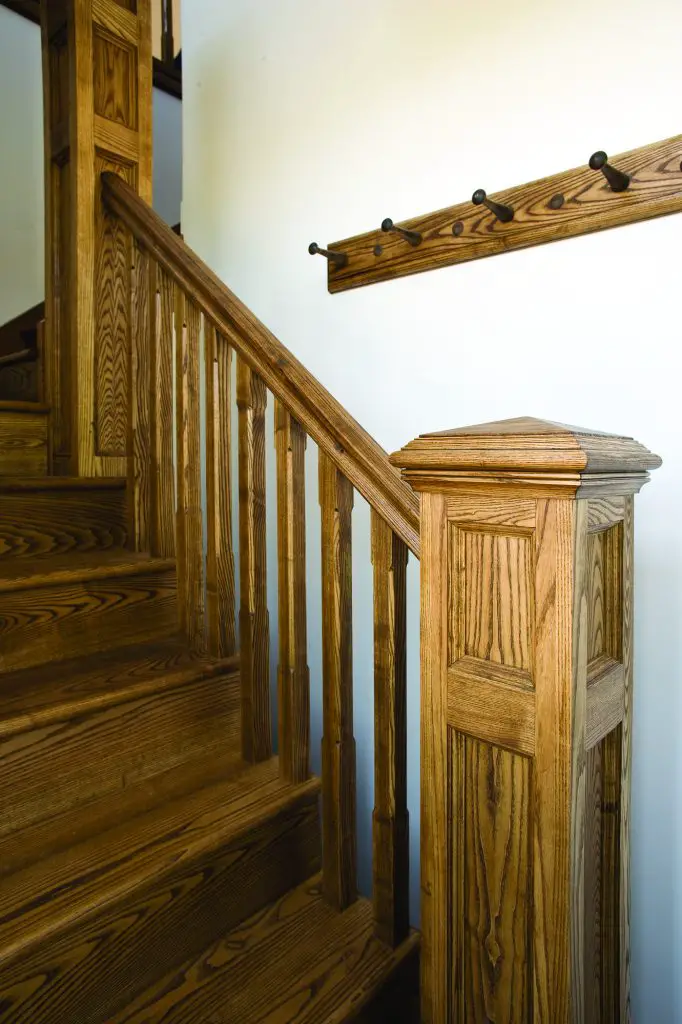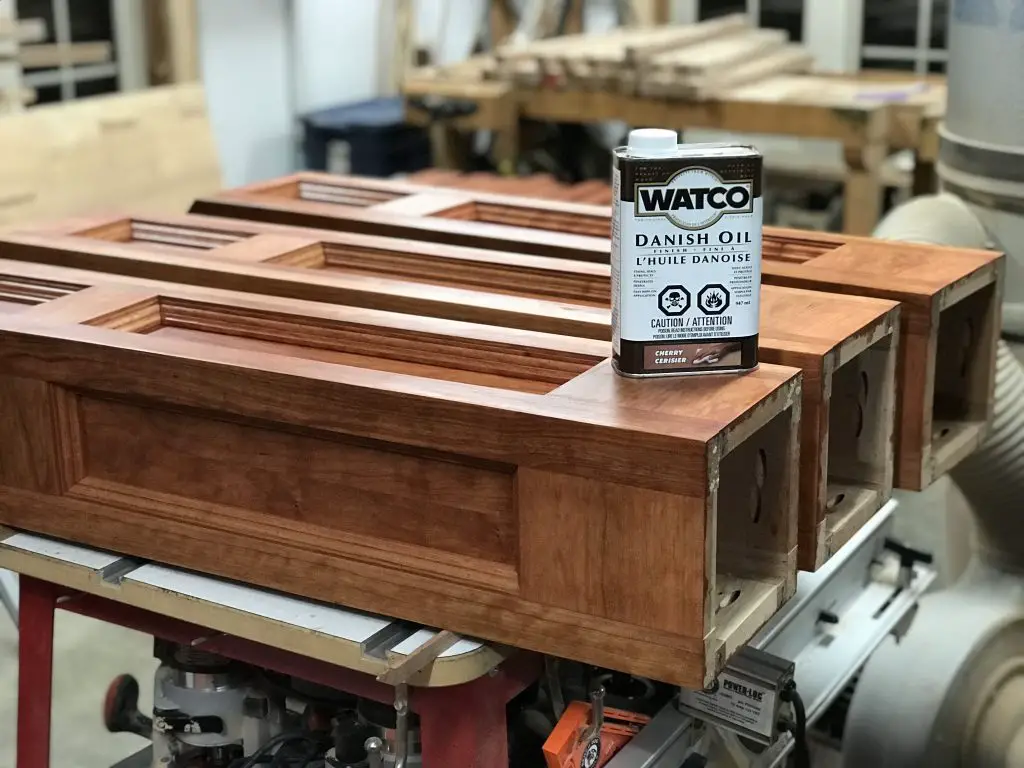Coloured oils are the best kept secret of the wood finishing world, and the less you know about wood finishing the more you’ll appreciate how easy and effective finishing oils are to use. If you’ve got a piece of furniture to refinish or some new woodwork that needs protection and beautification, finishing oils are an excellent option. In my experience they offer at least three unique advantages.

All finishing oils operate on the same principle. Apply a generous coat to the wood surface by brush or with a rag, let it soak in for 15 to 60 minutes, then use a clean rag to wipe off all the oil that didn’t get absorbed. Let this sub-surface oil dry (wait at least a couple of days), then apply and wipe off another coat. I find it takes at least three coats of wood finishing oil to create meaningful protection and some unique advantages, especially if you’re working in a home workspace.
The first thing you’ll notice is how easy it is to apply finishing oils. There’s no chance of drips or runs because each coat is wiped dry after application. This also means that airborne dust won’t settle and harden on the surface as it does when using film-forming finishes such as urethane. Although manufacturers usually recommend applying finishing oils with a rag, I find a brush works better, especially when you’re applying the oil to nooks, crannies and around complicated trim profiles. Neatness doesn’t count at this stage, just get the surface thoroughly wet. Use a rag for application if you like, but I find a brush is much more effective because the bristles get into small spaces.

Photo credit: Roger Yip
There are a handful of different oils traditionally used to finish wood, but my favourite type is generically known as “Danish” oil. This is not a brand name, but rather a type made by several manufacturers with thin viscosity and, usually, some kind of colour added. Completely clear, thicker viscosity oils such as natural linseed oil and tung oil are fine as far as they go, but they don’t deliver nearly the same beauty and ease of use as coloured Danish oils.
I’ve used several brands of Danish-type oils over the last 30 years and Watco is my current favourite. It’s widely available, it’s been around for decades and the colours are quite striking. My favourite is cherry applied over real cherry wood. The effect is attractive and especially deep. See what I mean below.

Repairability is another advantage of Watco oil. If a wood surface gets scratched or worn, simply wipe on more oil in that area, let the liquid sit for a while, then wipe off. Repeat as needed. You don’t even need to cover the entire item with oil, just go over and around the damage zone. If you try repairing a regular stain-and-varnish finish you’ll end up with a mess. Successful repairs of conventional film-forming wood finishes usually requires sanding all the way back to bare wood everywhere and beginning again, and that’s a big pain.
If there is a trick to finishing oils, it’s only that you should not wipe surfaces quite as much as you can after application. A gentle touch that might leave behind the tiniest bit of oil is best. Also, make sure previous coats of oil are completely dry before applying the next coat.
Ease of repairability with oil even extends to high traffic applications that are subject to wear. Although coloured finishing oils are not usually recommended for use on floors and stairs, they are my absolute favourite for wooden stairs. Not only are stairs subject to plenty of wear from foot traffic, but it’s exceptionally difficult to sand them back to bare wood for refinishing with stain and varnish. Oil finishing means you’ll never have to.
Give coloured finishing oils a try next time you’ve got some wood to finish and I think you’ll be pleasantly surprised.












